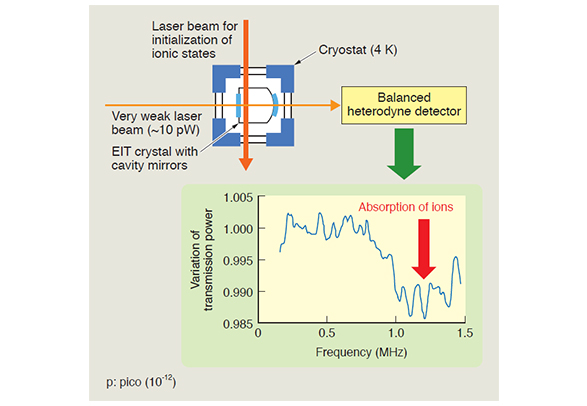- Back to the previous page
- Nano Materials & Devices
Ultraprecise Spectroscopy of EIT Crystal toward Realization of Quantum Computer
A quantum computer uses quantum superposition of physical states to deliver ultrahigh-speed computation. Ions in a crystal that exhibits electromagnetically induced transparency (EIT), such as Pr3+:Y2SiO5 (*), retain their quantum superposition states for a very long time, and are therefore suitable for quantum computer applications. However, it is difficult to observe individual ions in a crystal. This is the current challenge to be solved in order to realize a quantum computer using an EIT crystal.
To address this issue, Toshiba has established a novel spectroscopic technique to measure the absorption of ions in a crystal enhanced by an optical cavity by detecting a very weak light transmitted through the cavity at a high level of precision. Using this technique, we have succeeded in observing an unprecedentedly small number of ions. Furthermore, by analyzing the results of detailed experiments, we have also discovered a new law governing the distribution of ion energy levels in an EIT crystal.
Our next step is the observation of a single ion in an EIT crystal, which is crucial in realizing an EIT-crystal-based quantum computer.

Cavity-enhanced absorption spectroscopy of EIT crystal for quantum computers
(*) Pr3+:Y2SiO5: praseodymium-doped yttrium orthosilicate. Pr: praseodymium, Y: yttrium, O: oxygen.


